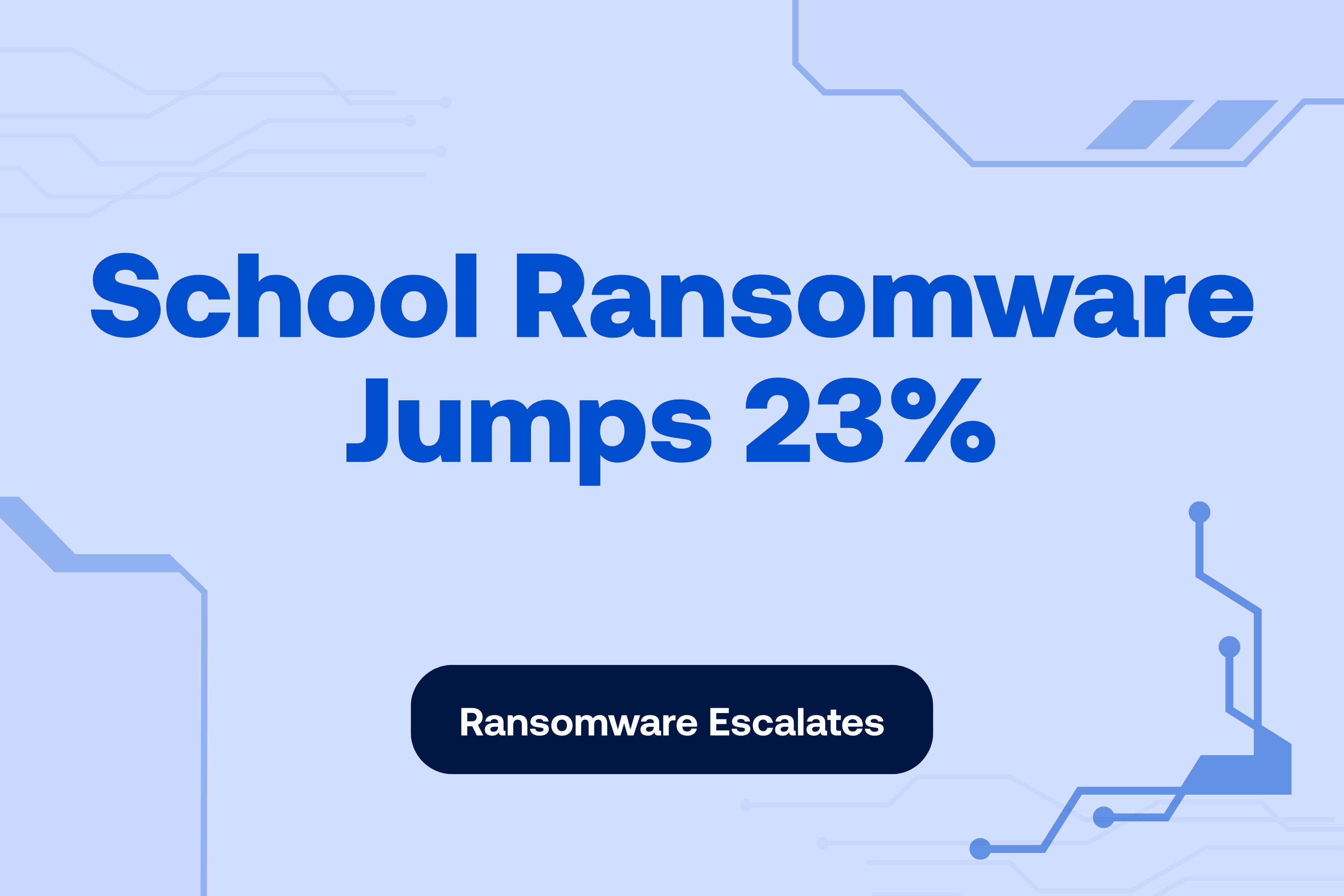What the numbers say (and why K–12 can’t wait)
- 23% YoY rise; 130 incidents in 1H 2025. The education sector remains a favored target, with average ransom demands around $556K. k12dive.com
- Tactics evolve. Double-extortion (data theft before encryption) is now table stakes; more districts report AI-polished lures and voice/video impersonation that push staff to “act fast.” Education Week
- Recent case-in-point. Ridgefield (CT) schools took systems offline after a late-July ransomware attempt—illustrating how even a contained incident can disrupt summer operations and back-to-school prep. CT Insider
Why K–12 is uniquely exposed in 2025
- Device sprawl + cloud tools from 1:1 programs expand the attack surface.
- Lean teams juggle thousands of endpoints, slowing patching and monitoring.
- Long-lived student data raises the stakes for theft and extortion.
- Shared services mean one breach can ripple across multiple districts.
How attackers are landing the first punch
- Phishing remains the #1 door. AI makes messages flawless and hyper-contextual. Education Week
- QR-code lures on flyers/newsletters route to credential pages.
- Deepfake voice notes spoof leaders to rush payments or data access.
- Exploited vulnerabilities hit unpatched systems—often before routine cycles catch up. SOPHOS
A 90-day ransomware defense playbook (built for small IT teams)
Days 1–10: Baseline & block the easy paths
- Run a rapid posture check: email security, endpoint coverage, backup integrity.
- Enforce MFA on SIS/LMS admins, finance/HR, and anyone with export rights.
- Kill shared accounts; rotate stale passwords and disable dormant users.
Days 11–30: Train, simulate, measure
- Launch micro-training and a phishing simulation district-wide; brief principals so participation sticks.
- Publish a 1-page “Pause & Verify” checklist for money, data exports, and access changes (verify via known phone/ticket—not reply).
- Turn on detailed logging for SIS/LMS/admin systems; capture exports, unusual queries, and after-hours access.
Days 31–60: Segment & harden
- Separate admin / classroom / guest networks; restrict lateral movement with VLANs and ACLs.
- Patch critical vulns; register exceptions with owners and target dates.
- Review role-based access; trim permissions to least privilege.
Days 61–90: Rehearse & prove
- Run a tabletop drill (phish → credential theft → SIS access): who escalates, who isolates, who communicates.
- Compile an evidence pack (training completions, sim results, MFA coverage, sample logs) for board, insurer, and—if applicable—state partners.
- Schedule quarterly simulations and a semiannual drill on the district calendar.
Where CyberNut fits (vendor snapshot)
Districts pair internal controls with CyberNut to reduce lift and show evidence:
- Phishing simulations that mirror on-brand, AI-polished lures staff actually see.
- Micro-lessons that take minutes and generate audit-ready completion records.
- Incident playbooks tailored to ransomware (isolation, comms, legal/insurer steps).
- Baseline + continuous assessments to prioritize patches, MFA coverage, and identity hygiene.
- State-program alignment so training, reporting, and drills match regional frameworks.
Bottom line
Ransomware actors are moving faster—and smarter. Districts that standardize MFA, verification, segmentation, and drills are cutting both incident likelihood and recovery time. The goal for 2025 isn’t just “compliance”—it’s muscle memory: people who pause before they click, systems that limit damage when they do, and evidence that proves it.
Editor’s note: The 23% surge and six-figure demands are drawn from mid-2025 sector reporting; AI-boosted lures and recent district disruptions underscore why rehearsed response matters just as much as prevention.
